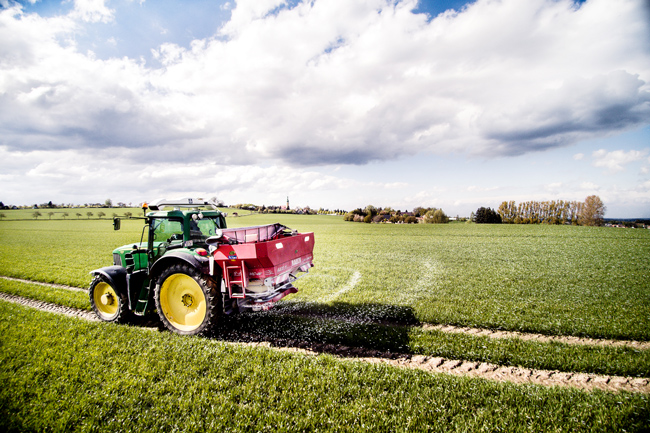Winter nitrate leaching losses below average, says AHDB
15th February 2019
Rainfall levels have been below average so far this winter and this has implications for nutrient management, according to AHDB Cereals & Oilseeds.
Mid-season excess winter rainfall (EWR) values, published on the AHDB website, suggest that nitrate leaching losses could be relatively low this season.
As the first nitrogen applications are made during February, farmers are reminded to estimate soil nitrogen supply (SNS) to ensure applications are not in excess of crop requirements.
The SNS index of a field can be estimated by the Field Assessment Method described in the AHDB Nutrient management guide (RB209). In addition to information on soil type and the previous crop, the method requires an estimate of the rainfall range for the field. Ideally, this should be based on EWR, as it provides a good indication of the potential loss of nitrate through leaching.
The mid-season estimates are based on EWR data from 1 October 2018 to 31 January 2019, averaged over 199 (40 km by 40 km) regions. For each of these regions, a colour-coded UK map highlights the RB209 EWR category:
Low – less than 150 mm EWR (annual rainfall less than 600 mm)
Moderate – 150 to 250 mm EWR (annual rainfall between 600 to 700 mm)
High – over 250 mm EWR (annual rainfall over 700 mm)
Only 11 of the 199 regions have EWR in excess of the long-term average (1981–2010) for the equivalent measurement period. These were all situated on the west coast of England, Wales and Scotland.
Despite the drier conditions, most western sites have still experienced ‘high’ levels of rainfall. However, the extent of the ‘low’ and ‘moderate’ rainfall zones is much wider this year, spreading further up the eastern coastline and more inland. Consequently, many regions are in a drier rainfall category than usual, with a small number of regions experiencing relatively large swings (i.e. from ‘high’ to ‘low’).
Sajjad Awan, who manages nutrient research at AHDB, said: “Farmers may want to make an early nitrogen application during February. The conditions last year could encourage more to act. The spring of 2018 was cold and wet, followed by a prolonged dry period, and this made nitrogen management challenging.
“However, the winter rainfall situation so far shows that people should not rush to make applications. SNS is likely to be highly variable across the UK right now. It’s even more important in these years to test how much nitrogen is in the soil before fertilisers are applied.”
AHDB will issue updated maps, based on the full EWR period (1 October 2018 to 31 March 2019), at the beginning of April.
Maps, as well as RB209, can be accessed via ahdb.org.uk/ewr

